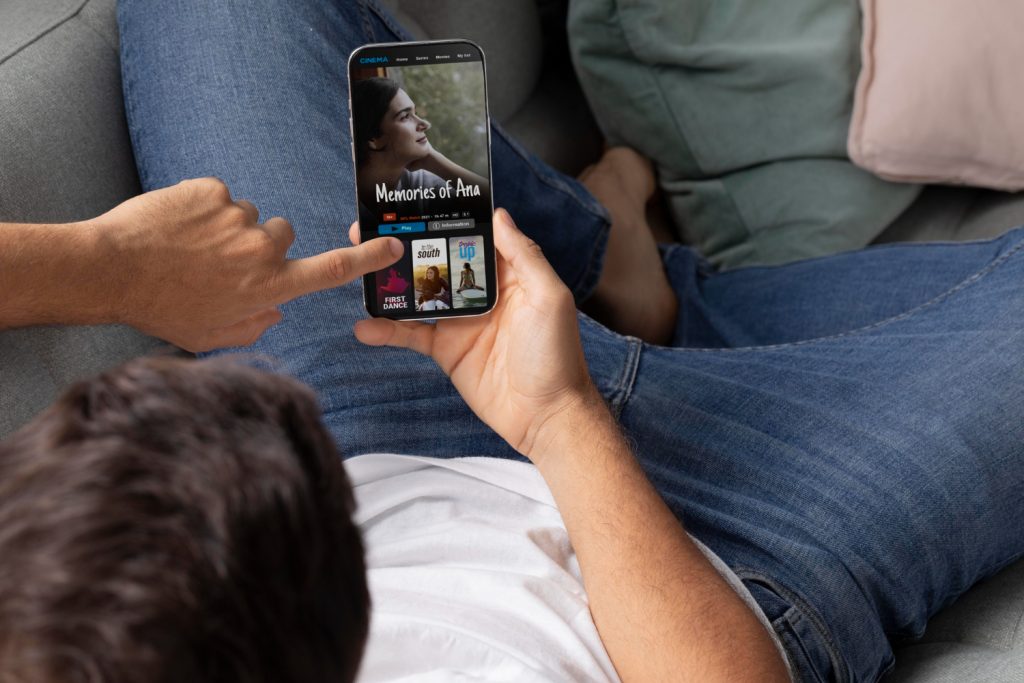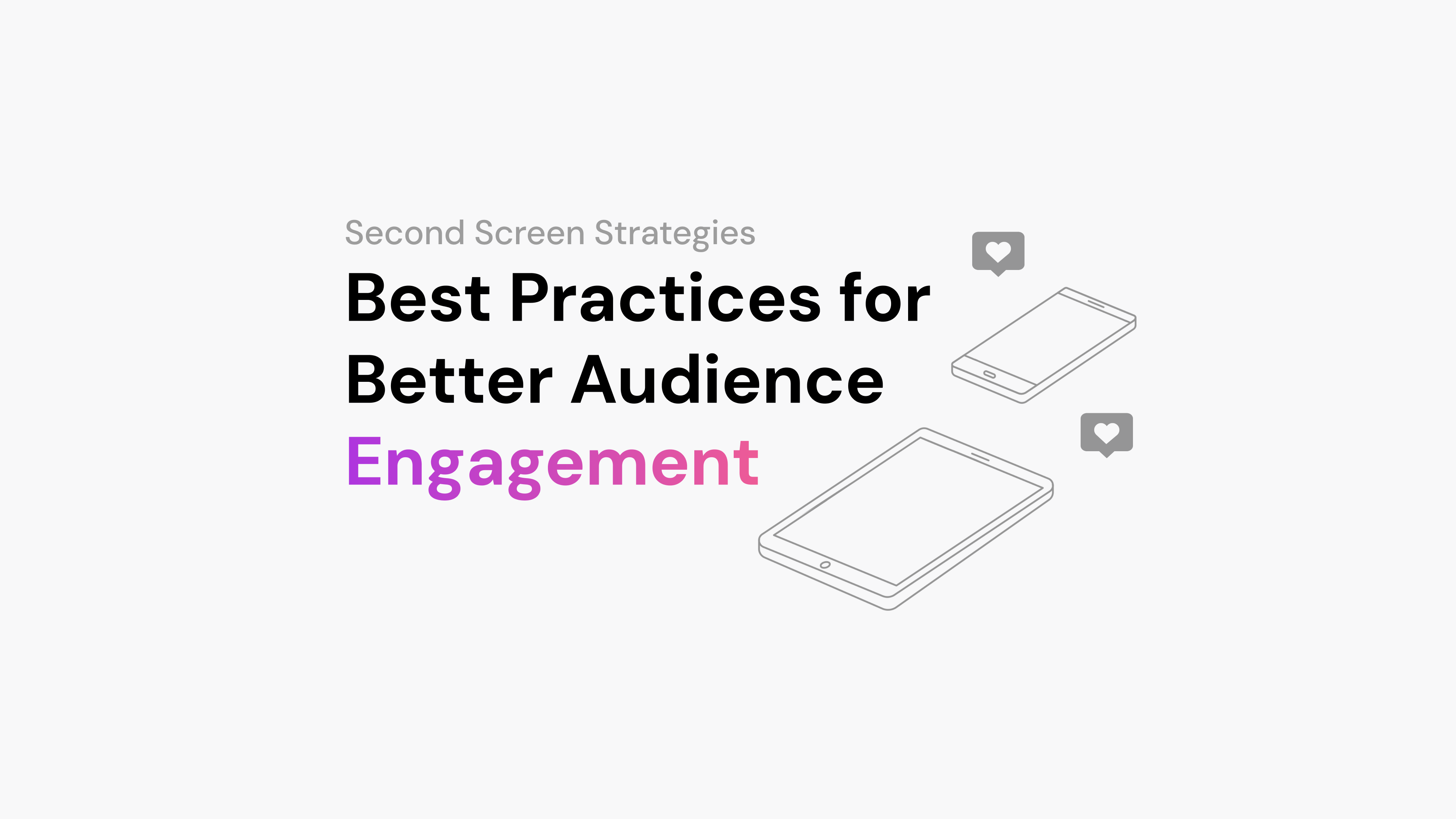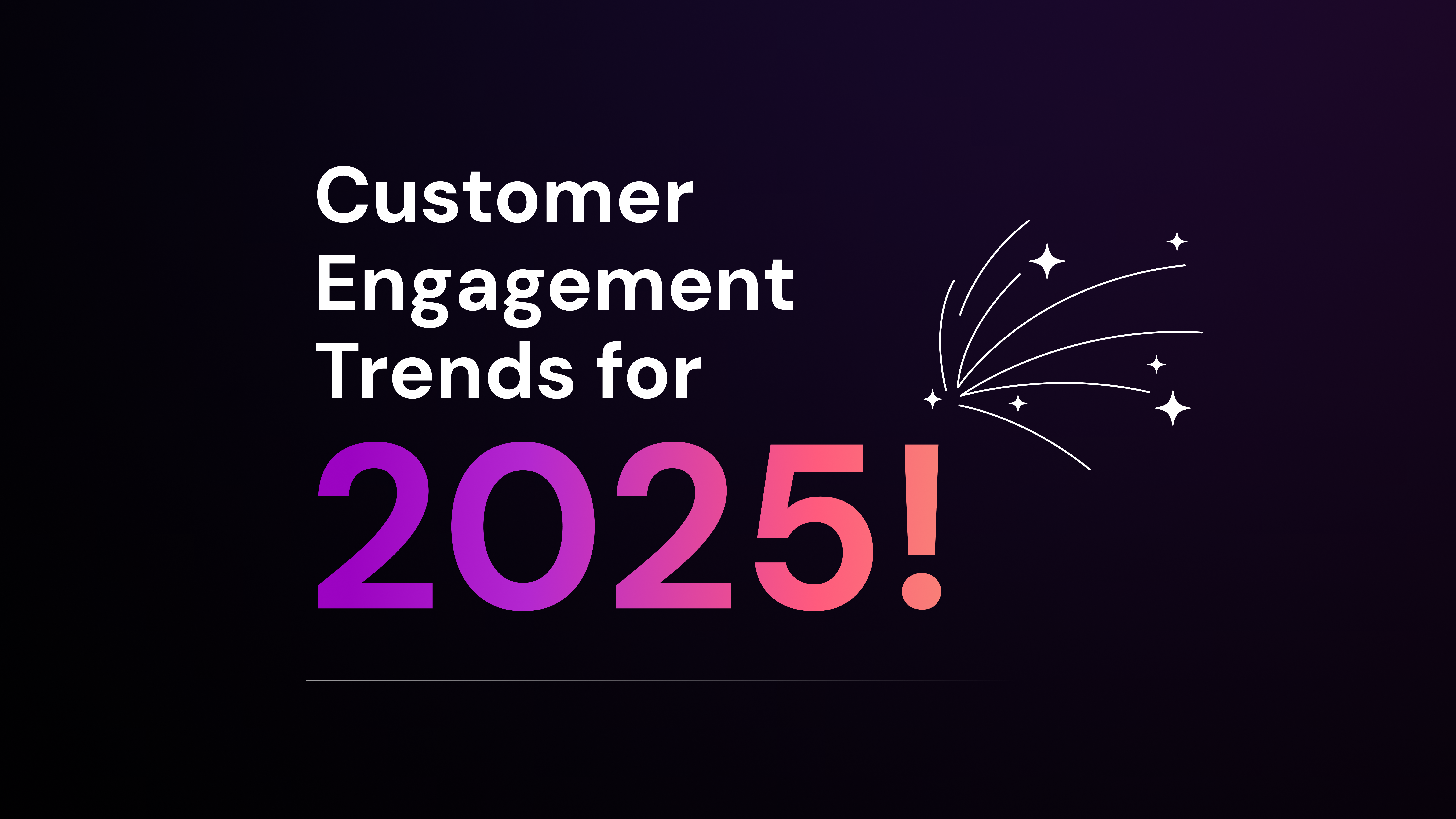Consumers often use smartphones, tablets, and TVs simultaneously, making it challenging for marketers to capture their attention. By implementing second screen marketing best practices, you can effectively engage multi-device audiences.
1. Analyze Audience Behaviors
Understanding how audiences interact with multiple devices during events is crucial for effective second screen marketing.
Identify Device Usage Patterns During Events
Many viewers use additional devices while watching television or live events. According to BRG Communications, 85% of tablet and smartphone owners use their devices while watching TV at least once a month, and 40% do so daily. Over 70% of adults use a second screen while watching TV, with smartphones (51%) and laptops (44%) being the most common devices.
Younger audiences are particularly active with second screens. For instance, 79% of 18–24-year-olds use second screens during commercial breaks. Understanding second-screen habits can provide valuable insights for marketers aiming to engage with Gen Z.
Examine Audience Interaction Across Devices
Audiences use their second screen for activities that complement their main viewing experience. According to Fall Off The Wall, 81% of viewers use mobile devices to find more information about the program they are watching. Meanwhile, 78% engage with friends, and 76% use social media while watching TV.
Exploring products seen in ads is also common. About 65% of users look up products advertised during broadcasts and 20% shop for advertised products.
Main activities on second screens:
- Searching for program information (81%)
- Engaging with friends (78%)
- Using social media (76%)
- Exploring advertised products (65%)
- Shopping for products (20%)
Marketers can explore second screen strategies to potentially engage their audiences by analyzing these behaviors.
By examining how audiences interact across devices, marketers can create strategies that align with these behaviors, enhancing engagement and driving desired actions.
2. Create Interactive Content for Second Screen
To maximize audience engagement, develop interactive content that enhances the primary viewing experience. Providing complementary experiences on second screens keeps viewers connected to your brand.
Develop Content to Complement Primary Screens
Implementing second screen technology allows for the creation of companion apps or platforms that complement main screen content, enhancing the viewing experience. These apps can provide additional content, behind-the-scenes insights, and interactive features like quizzes and polls, boosting engagement without causing distractions.
For example, the “Jeopardy! PlayShow Beta” app enables viewers to play along in real-time with the TV show, synchronizing the experience between the TV and the user’s smartphone.
Consider offering:
- Exclusive Content: Share behind-the-scenes footage, character backstories, or interviews that viewers can’t get elsewhere.
- Interactive Features: Implement polls, quizzes, or games related to the content. For example, AMC’s “StorySync” app for The Walking Dead lets viewers participate in real-time trivia and surveys during the show.
- Additional Resources: Provide interactive maps, timelines, or background information that deepen understanding of the content.
Ensure Content Remains Timely and Relevant
Timing is crucial in second screen marketing. Align your content with key moments in the primary viewing experience to maintain relevance. Strategies include:
- Real-Time Synchronization: Use synchronized content that matches events on the main screen to keep the second screen experience engaging and pertinent.
- Live Interaction: Encourage real-time engagement through live polls or Q&A sessions. These activities foster a sense of community and keep the content fresh.
- Manage Content Delivery: Avoid overwhelming viewers with too much information at once. Focus on enhancing the main experience by providing timely, relevant content.
Focusing on interactive and timely content creates a second screen experience that complements the primary content and keeps audiences engaged across multiple devices.
3. Synchronize Experiences Across Devices
To engage audiences effectively, creating a unified experience that connects your content across all devices is essential.
Create a Seamless Experience Across Devices
Maintain consistency in your messaging and visuals to ensure a smooth transition between screens. Align the look and feel of your website or landing pages with your TV ads so that when viewers shift from watching a commercial to browsing on their devices, they instantly recognize the connection.
Develop companion apps or interactive platforms that enhance the primary content without causing distraction. A dedicated app can offer additional information, behind-the-scenes content, or interactive features related to a TV show or event, keeping your audience engaged with your brand.

Use Tools to Align Content with Events
Use technologies like Automatic Content Recognition (ACR) to synchronize your campaigns across devices. ACR detects when your TV ads air and triggers corresponding online ads or content on viewers’ devices. Real-time alignment ensures your audience receives a cohesive message, regardless of the device they’re using.
Understanding and applying real-time audience engagement techniques can enhance your use of synchronization technologies.
For example, during the Super Bowl, Coca-Cola’s “Polar Bowl” campaign let viewers watch animated polar bears react in real-time, synchronizing the TV event with online engagement.
Synchronizing TV and digital advertising allows you to target viewers precisely when their interest is highest. By coordinating your efforts, you extend the reach of your TV ads and reinforce your brand’s story across multiple platforms.
4. Use Social Media for Real-Time Engagement
Engaging your audience in real-time strengthens their connection to your content. Social media platforms offer immediate ways to interact with viewers during live events.
Engage Audiences in Real Time on Social Media
Twitter and other social media channels are ideal for engaging with audiences as events unfold. Live-tweeting during popular shows or events allows you to join existing conversations. For example, the first presidential debate generated 10 million tweets in 90 minutes. By participating in these discussions, you can connect with viewers when their interest peaks.
Use trending hashtags to increase visibility and reach a broader audience. Encourage participation through interactive elements like polls, quizzes, or contests. Respond promptly to user comments to foster a sense of community and keep the conversation active.
For additional strategies for engaging your audience, consider reviewing this comprehensive guide on audience engagement, which is available here.
Drive Conversations to Proprietary Spaces
While social media is effective for immediate interaction, steering the conversation to your own platforms provides additional benefits. Create compelling apps or websites that offer exclusive content or interactive experiences. Encourage engagement on your platforms by offering features not available elsewhere.
By drawing viewers to your proprietary spaces, you gain better control over user interactions and data. This approach helps build a loyal community around your content and enhances your digital presence. Collecting first-party data through owned channels offers valuable insights into your audience’s preferences and behaviors.
5. Provide Supplementary Content
Enhancing your audience’s experience means offering more than just the primary content. By providing supplementary content on secondary screens, you keep viewers engaged and deepen their connection with your brand.
Create Exclusive Content for Secondary Screens
Offer content on the second screen that isn’t available elsewhere. Such exclusivity encourages viewers to use their secondary devices and stay connected with your content. Examples of exclusive content include:
- Behind-the-scenes footage: Share insights into how your content is created, giving fans a glimpse into the production process.
- Interviews with key figures: Feature chats with actors, athletes, or influencers related to your main content.
- Interactive polls and quizzes: Engage audiences with real-time polls or quizzes that relate to what they’re watching.
- Live Q&A sessions: Allow viewers to ask questions and interact directly with personalities associated with your content.
Providing exclusive content not only keeps viewers engaged but also fosters a sense of community and belonging.
Enhance Main Experience with Supplementary Content
Supplementary content should complement and enrich the primary viewing experience. Such content could involve:
- Additional background information: Offer detailed insights or facts that enhance understanding of the main content.
- Interactive features: Implement features like synchronized trivia or challenges that align with what’s happening on the primary screen.
- Real-time updates: Provide live statistics, scores, or updates that are relevant to live events or broadcasts.
For instance, during a sports event, a secondary screen can display player statistics or alternative camera angles, giving fans a more immersive experience.
By thoughtfully enhancing the main experience with supplementary content, you add value that keeps audiences engaged across multiple devices.
6. Optimize for Mobile Devices
Ensuring your content is mobile-friendly is crucial in today’s multi-device world. Since a significant portion of second screen activity happens on smartphones, tailoring your content for smaller screens is important.
Ensure Content Is Mobile-Friendly
Design your websites and apps to function seamlessly on smartphones and tablets. Use responsive design techniques to adapt content to various screen sizes and orientations. Keep text readable and visuals clear without overwhelming the user.
Test your content across different devices and operating systems to identify any issues. Consider how viewers might switch between devices during a viewing session and ensure a consistent experience.
Create content that’s easily consumable on mobile devices, especially during short breaks. Content should load quickly and be accessible even on slower connections.
By optimizing for mobile devices, you enhance the viewing experience and keep your audience engaged across all platforms.
7. Measure Performance and Refine Strategies
Monitoring your second screen marketing performance is essential to understanding how your audience engages across devices. Use analytics tools to track engagement metrics like app downloads, social media interactions, and website visits.
Use Analytics Tools for Cross-Device Engagement
Implement analytics tools to gain insights into user interactions on different devices. Track metrics such as:
- Engagement rates on mobile apps and websites
- Social media likes, shares, and comments during your campaigns
- Traffic sources and user behavior across devices
- Correlation between second screen engagement and overall viewership
Analyzing these metrics helps you identify which strategies are most effective in engaging your audience on multiple screens.
Adjust Content and Marketing Based on Data
Use the insights from your analytics to refine your strategies. If certain content performs better on specific devices, adjust your approach accordingly. For example:
- If social media engagement peaks during live events, focus more on real-time interactions.
- If users engage more with visual content on mobile devices, incorporate more images and videos.
- If certain calls to action generate higher responses on specific platforms, tailor your messaging to those platforms.
By continually analyzing and adjusting based on data, you can optimize your second screen marketing efforts to better meet your audience’s preferences.
8. Encourage Audience Participation and Community Building
Engaging your audience in real time encourages deeper connections and fosters a loyal community around your content.
Prompt Audience Interaction
Use interactive elements to engage viewers as they consume your primary content. Incorporate live polls, quizzes, or Q&A sessions that allow the audience to participate actively. Designing mobile apps or interactive platforms that sync with your content can enhance engagement. Encourage viewers to share their thoughts and reactions using branded hashtags. This makes it easier to track and join conversations. Highlighting user-generated content can also increase engagement and loyalty by making your audience feel valued and heard.
Foster a Sense of Community
Building a community around your content helps retain audience interest and promotes organic growth. Facilitate peer-to-peer interactions, which can be more engaging than traditional presenter-audience dynamics. Offering platforms such as chat rooms or discussion forums allows viewers to connect with each other, enhancing the overall experience.
For senior audiences, peer networking is especially valuable. By fostering spaces where they can exchange ideas and insights, you create a compelling reason for them to remain engaged. Incorporating gamification elements like leaderboards or rewards for participation can motivate audience involvement and strengthen community bonds.
By applying these second screen marketing best practices, you’ll effectively engage your multi-device audience, foster deeper connections, and build loyal online communities, enhancing user engagement and strengthening your digital presence.
Ready to see the impact of an effective brand community on your bottom line? Sign up now at Arena and start leveraging our powerful features to boost engagement and retention. Join thousands of brands that trust Arena to turn visitors into loyal customers.



